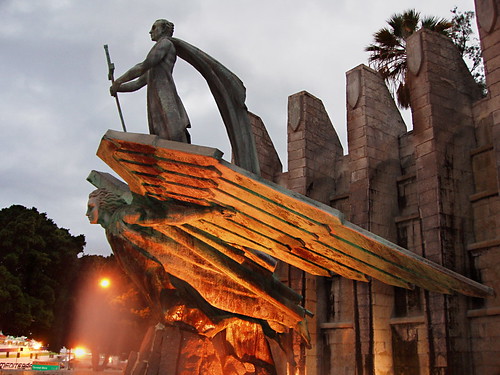One of the things that many people might not know about Tenerife is that General Franco plotted to overthrow the Spanish Government from here, leading to the start of the Spanish Civil War.
Even now there are divisions in Spain about Franco’s rule, with some still seeing him as the saviour of Spain despite a well documented catalogue of serious violations of human rights under his leadership.
However, traces of Franco in Tenerife and in Spain are becoming more rare because of something called the Ley de Memoria Histórica which is an official and complete condemnation of the Franco regime. The law was passed on 2007 and it is without question a well intentioned one.
There are a number of various aspects to the law including the right to view public documents from the Franco era and Government support in the search for those who went ‘missing’ during the Franco years including for the excavation of mass graves.
But there is one part that I can’t quite come to terms with and that is the section relating to the removal of shields, badges, plaques and other symbols glorifying Franco. There seems to be confusion and a questionable flexibility about how this has been interpreted.
Street names bearing his name have been changed throughout Spain. In Puerto de la Cruz Avenida Generalísimo’s name has been changed to Avenida Familia Bethencourt y Mol (really rolls off the tongue).
You can change the sign but not what’s in people’s minds, so everyone still calls it Avenida Generalísimo.
Where the Ley de Memoria Histórica enters a grey zone for me is when the law is used for actions that I believe could be counter productive. It’s one thing to remove symbols of glorification, it’s another to remove symbols and monuments which may act as a reminder of dark times.
The Aushwitz-Birkenau Memorial and Museum exists because, as founder and concentration camp survivor, Wladyslaw Bartoszewski emotionally proclaimed – ‘We will save from forgetting, what they wanted to destroy.’
The memories and thoughts that are uncomfortably stirred by the existence of Aushwitz-Birkenau are a terrifying reminder of the evils that mankind is capable of. But isn’t that the point?
In the forest at Las Raíces there is (or was) a graffiti covered obelisk commemorating a meeting that took place just before the outbreak of the civil war consisting of officers who were loyal to Franco.
A couple of years ago it was proposed that it should be torn down as it was argued it contravened the Ley de Memoria Histórica. I couldn’t see the logic in this at all. It’s not a monument glorifying the event, just a reminder of an historic moment in time.
Another potential victim was the Monumento al Ángel Caído (Monument to the Fallen Angel) in Santa Cruz. This one does seem to glorify Franco, who it’s claimed is represented by a figure standing victoriously atop an angel. It is known locally as ‘Franco’s Monument’ but in a bid to save it from destruction, the Santa Cruz council changed its name to the Monument to the Fallen Angel.
Whatever your political views, the sculpture is an impressive work of art and I was glad that it was saved.
As someone who has been both fascinated and disgusted by history from a young age and also as someone who enjoys good art (even if I don’t always understand it), I’m uncomfortable to see either tampered with, whatever the justification.
If the Monumento al Ángel Caído is, as is the popular view, a monument to Franco, it is one that reveals arrogance and an outrageous sense that Franco may have considered himself worthy of being seen as divine. That in itself is worth being reminded of.
Where there are no physical symbols to remind us, there’s a danger that historical events may become lost in the mists of time for many people.
Ultimately, there’s a fine line between causing distress and offence and brushing the bits of your past that you’d rather forget under the carpet.
It may be painful to remember… but to forget would be a crime and a betrayal of those who suffered and died at the hands of any oppressive regime.






Very balanced written. I totally agree that some statues etc of oppressive cultures must be saved as a reminder of past times. The memories of Franco, Stalin, Lenin, Mao et al must be saved!
Great article. Thank you.
I agree with the sentiment. However most nazi symbolism has been removed from Germany much destroyed in the war. Anything glorifying Franco or the war should be removed. Its difficult though as its still a cause of division in Spain
Franco saved Spain from communism – communist agents in the pay of the Spanish government murdered politicians of the right & left such as Calvo Sotelo & Andres Nin and then proceeded to murder thousands of innocent members of the clergy and others – and then in 1937 went on to murder anarchists & socialists fighting for the republic – Franco however repressive was the only alternative to a republican Spain intent on internal bloodletting between communists,anarchists & socialists !